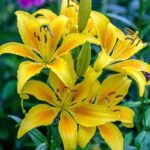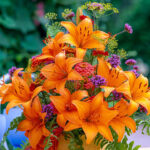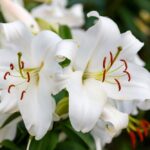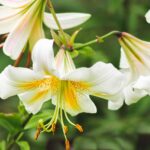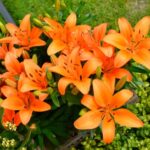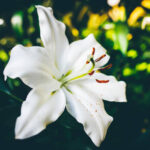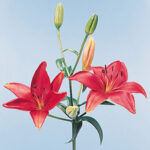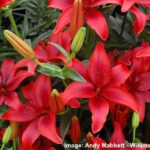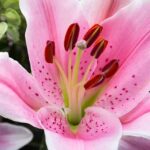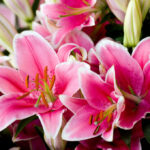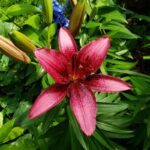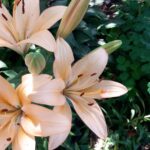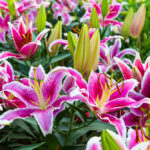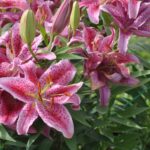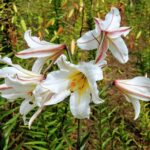
Daylilies (hemerocallis) are attractive perennials with exotic lily-like, trumpet blooms. The Greek word “hemerocallis” means “beautiful for a day,” and the plants are so named because the individual blooms only last for one day. But they are quickly replaced by colorful new flowers, making for a great display in summer and into autumn.
Daylilies are tough and easy to grow. They will grow in most soils, are low maintenance, untroubled by most pests and diseases, and don’t need stakes. Although they prefer moisture, they are also drought tolerant. They are ideal for sunny borders and the foliage is often evergreen in milder locations. They are often grown near spring onions, as their leaves can help cover unsightly onion leaves when they die back. They also make good ground cover plants on slopes, as they have dense roots that hold the soil together.
There are thousands of daylilies to choose from in a range of colors, from white to yellow to deep red and burgundy. They look particularly good in borders with a ‘hot’ color theme and combine well with other perennials such as helenium, geum, rudbeckia and bronze fennel. They also look good with exotic plants such as bananas, ginger lilies and cannas. Some varieties are fragrant. The flowers are attractive to native insects, especially hoverflies and ladybugs, and make good cut flowers if cut in bud.
Daylilies have the added benefit of being unaffected by lily beetles, which can decimate the foliage of other lilies, including Lilium, Cardiocrinum and Fritillaria species.
And if you’re willing to try, some hemerocallis varieties are considered an edible delicacy – fried or added to salads.
All parts of the plant are toxic to cats if ingested.
How to Grow Daylilies (Hemerocallis)Daylilies are tough and thrive in a variety of soils, including clay. The best growing conditions for hemerocallis are moist, fertile and well-drained soils in full sun. Smaller varieties can also be grown in containers. Divide the plants every few years to keep them growing vigorously.
